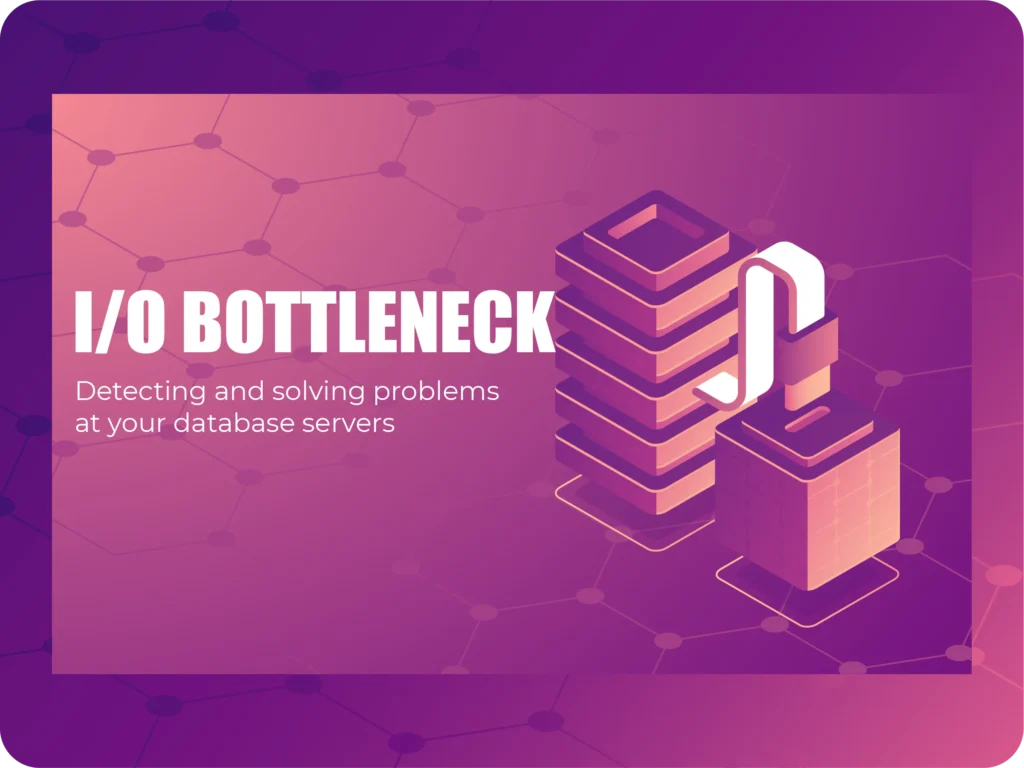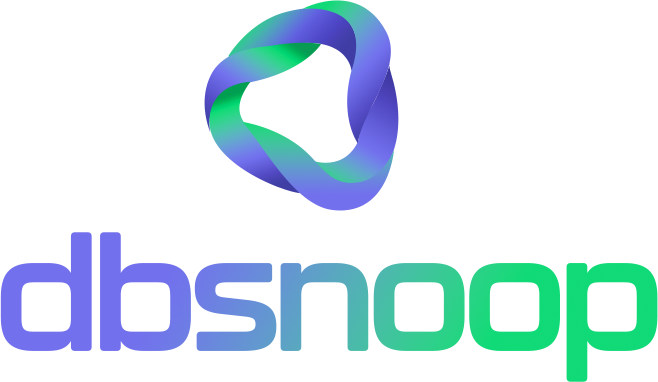

Most database performance problems stem from predictable causes. Among them, I/O bottlenecks are some of the most common — and also the most overlooked. As data volumes grow and the demand for real-time responses increases, the ability to identify and resolve these chokepoints becomes critical.
In this article, we explore the symptoms, causes, and practical strategies for dealing with I/O bottlenecks in database environments, with a technical focus and an observability-driven approach.
What Characterizes an I/O Bottleneck?
Simply put, I/O bottlenecks occur when the storage subsystem (disks, controllers, storage network) can’t keep up with the read and write rate demanded by database operations.
Although hardware remains an important factor, I/O bottlenecks today are rarely caused solely by physical limitations. More often, they are indirect consequences of inefficient data access patterns.
Some of the most common symptoms include:
- Increased average read time (
avg_read_time) or write time (avg_write_time) - High disk operation latency even with idle CPU
- I/O wait events dominating the profile of active sessions
- Throughput saturation on volumes, disks, or network interfaces (in SAN/NAS setups)
- Simple queries suddenly becoming slow during peak hours
Effective detection begins with the ability to correlate database activity with the behavior of the I/O subsystem.

Main Causes
1. Non-sequential Data Access
Queries that require random (non-sequential) block reads put pressure on the system’s IOPS. This is typical in scans of poorly designed indexes or searches with non-selective filters.
2. Missing or Ineffective Indexes
Sem os índices certos, o banco de dados é obrigado a percorrer tabelas inteiras para responder a consultas, gerando grandes volumes de leitura física, mesmo para buscas pontuais.
3. Highly Fragmented Tables
Over time, unordered insert and update operations can cause data pages to become fragmented. This reduces the efficiency of sequential reads, forcing the system to perform multiple disk accesses to assemble a single logical block.
4. Uncontrolled Bulk Writes
Batch operations, especially during nightly loads or poorly configured integrations, can create write spikes that overload buffers and force frequent flushes to disk.
5. Lack of Caching or Improper Memory Usage
If the database cannot keep the most frequently accessed data in cache (buffer pool, shared pool, etc.), it will need to fetch data from disk more often than necessary. This turns a memory problem into an I/O bottleneck.
6. Undersized or Misconfigured Storage
Shared volumes between systems, slow or misconfigured disks, and file systems with incorrect parameters — all can introduce latency even when the database itself isn’t “at fault.”
How to Detect I/O Bottlenecks
I/O analysis requires more than looking at isolated metrics. It’s necessary to investigate based on correlation of events and usage patterns.
1. Specific Metrics to Monitor
- db file sequential read (Oracle) or PAGEIOLATCH_XX (SQL Server): indicate physical disk reads
- avg_iowait and read latency: reveal how long operations wait for disk response
- Cache hit rates (buffer pool hit ratio): low values indicate excessive physical reads
- TPS (Transactions per Second) vs. IOPS: a drop in TPS combined with high IOPS may signal congestion
2. Tools and Data Sources
- Internal DBMS views such as v$system_event, pg_stat_io, sys.dm_io_virtual_file_stats
- Continuous collection via observability tools, with historical dashboards and threshold-based alerts
- Resource wait logs (wait events), available on instances with tracing enabled
- OS and storage metrics: iostat, sar, vmstat, or integration with APM systems
3. Temporal Profile
It is essential to analyze I/O patterns over time. Many bottlenecks occur only during specific windows (such as peak access times or concurrent backups) and may disappear during a one-time diagnosis. Continuous monitoring is the only reliable way to identify the root cause.

Correction Strategies
Not every bottleneck is solved by upgrading the disk. Here are effective approaches:
1. Rewrite the most demanding queries
Using more selective filters, avoiding functions on indexed columns, and rethinking joins can drastically reduce the amount of data read.
2. Redesign the indexes
Adjusting the coverage and selectivity of indexes improves data access and reduces unnecessary read volume.
3. Reorganize or compact tables
Periodic rebuilds or partitioning strategies by date, region, or status help prevent fragmentation and concentrate access on smaller areas
4. Adjust memory usage
Increasing buffer cache allocation or reviewing shared memory usage parameters allows more data to remain in memory, minimizing disk access.
5. Separate heavy workloads
Running ETL jobs, reports, or backups in separate time windows reduces I/O contention with critical real-time operations.
6. Evaluate the storage system
As a last resort, it may be necessary to evaluate the storage subsystem: disk type (HDD vs. SSD vs. NVMe), network latency in external storage, and the possibility of using cache in controllers.
Conclusion
I/O bottlenecks are not exclusively an infrastructure problem. Often, they are symptoms of poorly calibrated decisions in database usage, query design, or data modeling. Early detection through end-to-end observability allows you to act before the issue impacts the business.
Efficient systems are not those that avoid I/O altogether, but those that handle it with awareness, predictability, and control. If your disk latency is dictating the pace of your application, it may be time to look beyond the query—and see the complete ecosystem.
Visit our YouTube channel to learn about the platform and watch tutorials.
Schedule a demo here.
Learn more about Flightdeck!
Learn about database monitoring with advanced tools here.


